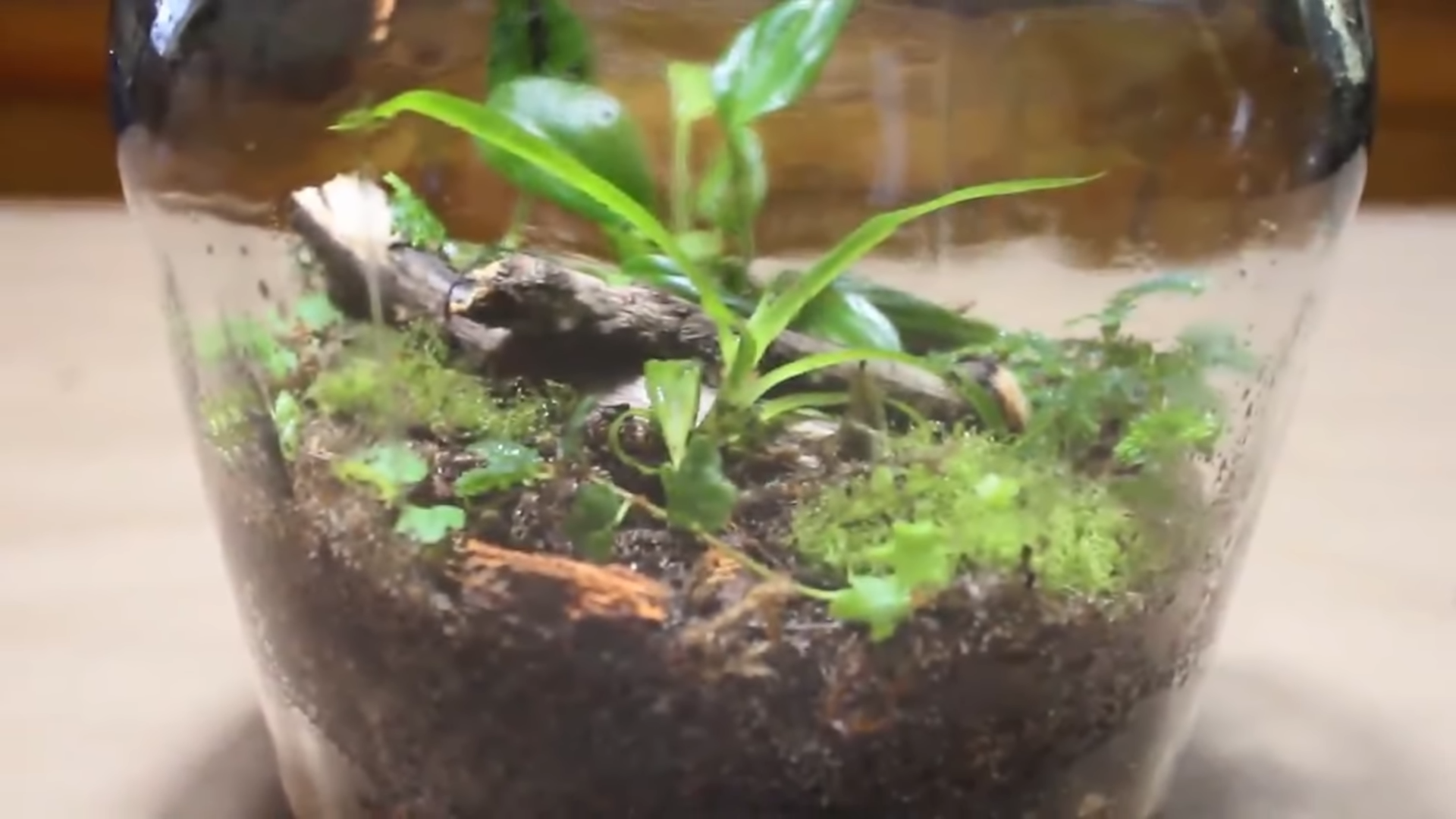It’s funny sometimes – at first you’re doing a seemingly insignificant thing, it may even seem completely ridiculous! And then it becomes a truly scientific discovery. Today we will talk about one such story – a fantastic and even fabulous event that happened in England with 80-year-old David Latimer. In 1960, Briton David Latimer, an electrical engineer, became interested in conducting an amazing experiment. He took a large 35-liter glass bottle, placed the soil mixture there and lowered the seedlings there with a long wire, subsequently watering it with water. 
Fortunately, it was not difficult to get such a bottle at that time – the market was experiencing a boom in glass, because the chemical industry was trying to adapt to plastic. It is worth noting that the engineer planted only 4 seedlings, of which only 1 survived. The next discovery of the «sarcophagus» occurred only 12 years later, in 1972. David carefully checked everything, captured the developing life, lubricated the cork for reliability and safely closed it for 50 years ahead. This is where the real magic happens outside of Hogwarts School! After all, during all this time, the tradescantia planted by Latimer developed independently: it produced oxygen, threw out new shoots, fed on its own humus and grew smoothly, increasing in scale. 
David himself was surprised at how, in fact, a self-sufficient unique ecological system was formed in the bottle. All thanks to photosynthesis, which produced the right amount of energy for the life of the bottle garden. The homegrown tradescantia was carefully stored under the stairs on the 2nd floor in the house. The bottle with the garden was 2 meters from the window, uncovered by curtains. Thanks to this, a few sunlight constantly entered the house and brightened the plant. And for these long 60 years, the flower has never complained about its condition, being content only with sunlight and life under the steps. (he, of course, does not talk, but it was clear from his condition that he was not ill there) 
It is surprising that since 1960, David has never been engaged in a flower in detail: he did not cut the germinating shoots of the plant, did not carry out watering. All he did was sporadically twirl the flower so that it grew evenly. Over the years, the plant has completely filled the bottle, right to the brim, to the very greased cork! It’s all the fault of recycled air and moisture, which were in the vacuum of a closed bottle. The physicist gained fame when he decided to participate in a competition from the BBC radio station. He sent a photo of his miracle flower to the editorial office and decided to ask if his amazing garden in a bottle is valuable for the scientific community. David himself was convinced that his discovery would rather be useful to gardeners, because it is able to grow almost without human influence. 
But he was mistaken, NASA employees became interested in his activities. Experts from the BBC reported that this is a really great experiment and simply a fantastic event. They passed all the information to NASA, whose employees have long been trying to figure out how to plant a plant in outer space, and this process clearly gave them a lot of new useful information. After all, the very essence of the existence of such a flower in a bottle is a discovery for modern botany and biology. The plant has independently created for itself a pleasant environment for growth. For example, the soil produced carbon dioxide, and the water that the plant fed on got back into the air and with the help of evaporation, this cycle turned into a real cycle. 
Also, the leaves constantly falling from the tradescantia subsequently became humus and served as natural food for the flower. In a word, an ordinary plant has created an ecosystem within a glass bottle. Isn’t that brilliant?! Did David think then, 60 years ago, that his uncomplicated experiment would be so important for scientists of the largest scale? Probably not. After all, he still thinks that this occupation is quite boring: «I planted it once, put it under the stairs and that’s it! You don’t even need to do anything… Terrible boredom,» Latimer said. 
Now the engineer is 80 years old. Watching the extraordinary tradescance, his whole life flew by, they seemed to live hand in hand! Latimer is happy: he has a beloved wife, children and grandchildren, he has lived a really happy life. Now David sincerely believes that his sons or their children will continue the work of his whole life — they will take the flower to themselves and watch over it. In case of their refusal, the amazing flower will be transferred to the ownership of the Royal Horticultural Society. I have all my friends.






